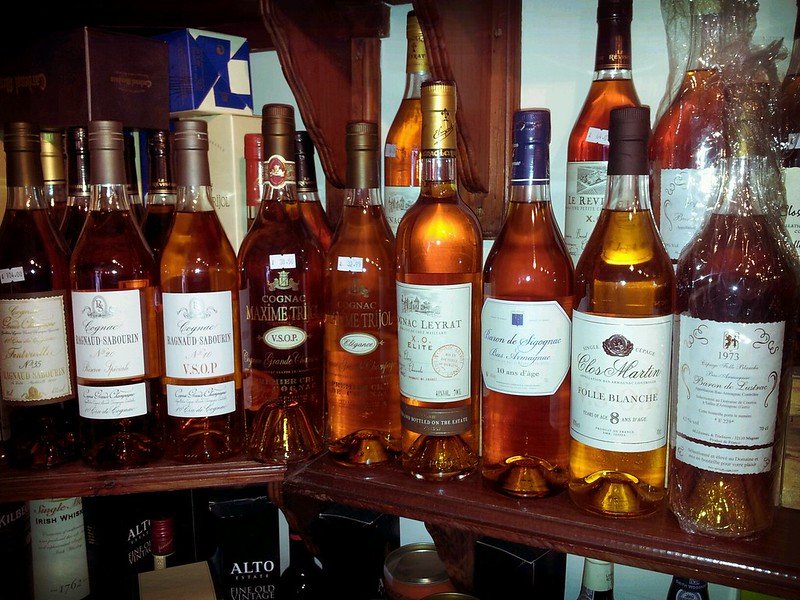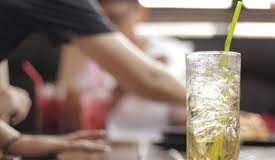Wine Brandy – Cognac in France
Cognac basically is a variety of brandy made in France. Named after Cognac town located within the wine growing French regions of Charente & Charente-Maritime, this variety of brandy must be essentially made from the Ugni Blanc variety of grapes which is locally known as Saint-Emilion.
For any brandy to be named Cognac, the production methods are required to meet certain legal requirements which are regulated by a body called Appellation d’origine controlee. Cognac must be distilled twice using copper pot stills. It must be aged for at least two years of time within French oak barrels coming from Limousin or Troncais.
Maturing Cognac is quite similar to the processes adopted for whisky & other wines when aged in barrels. Most Cognacs sold in the market are aged for a considerable longer period of time than the basic legal requirement of two years.
Cognac Producing Regional Map
The Cognac producing region of France should not be confused with the Champagne producing northeastern region. Although Champagne, the sparkling wine & Cognac share a common etymology & are derivations of the French chalky soil, these basically stand distinctly apart. The authorized region for production of Cognac is divided into six zones.
These are the Fins Bois, Bon Bois, Bois Ordinaire, Borderies, Grande Champagne & Petite Champagne. All these six zones fall within the department of Charente & few areas of Deux-Sèvres & Dordogne. However, a blend of Grande & Petite known as Fine Champagne also comes from this region composed in equal proportions.
Process of Cognac Production
Produced by doubly distilling white wines from any of the designated wine growing regions of France, the wines used in Cognac is generally very dry acidic & thin. Generally characterized as “undrinkable”, this wine is classified as excellent for distillation & aging. In order to be considered true Cru, the wines composing Cognac must be strictly 90% Ugni Blanc (Trebbiano), Folle Blanche & Colombard.
The remaining 10% of the grapes in making Cognac can be Juracon Blanc, Folignan, Meslier St-François (Ramé), Sélect, Montils or Sémillon. Cognacs that do not carry labels as Cru are freer in the selection of allowed variety of grapes.
These can be 90% Juracon Blanc, Colombard, Folle Blanche, Meslier St-François (Ramé) Montils, Ugni Blanc or Sémillon & 10% Sélect or Folignan. After all, Cognac is a type of brandy which after distillation & during aging is also known as eau de vie.

Cognac Aging Process
After the process of distillation is complete Cognac must essentially be aged in Limousin oak casks for a minimum of two years before it can be sold in the markets. Distilled Cognac is typically put in casks around 70% alcohol by volume strength. While interacting with the air inside casks & the oak barrels 3% of Cognac & water eventually get lost through evaporation every year.
Since alcohol dissipates much faster than water, concentration of alcohol in Cognac drops to about 40% over time during the aging process. Oak barrels normally stop contributing to the flavor of Cognac after fout to five decades, any further aging periods of time does not benefit anyway. Lastly, aged Cognac is transferred & stored in Bonbonnes (Glass Carboys) for further blending.
Blending Cognac
The age of Cognac is based on the youngest component of the spirit which has been used in the blend. Mostly, in the case of large commercial producers the blend is normally composed of spirits of varying ages coming from different local areas. Blending of various eau-de-vie is quite important in the making of Cognac. Master tasters are employed for the complexity of blending in obtaining the right flavor.
Moreover, most large companies maintain a consistent brand style & quality quite similar to the processes adapted in blending whiskies & non-vintage champagne. Cognac obtained from eau-de-vie of a single distillery or vineyards do not have to face any such blending challenges.







